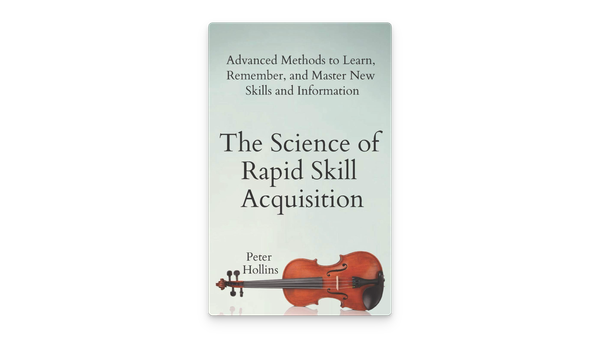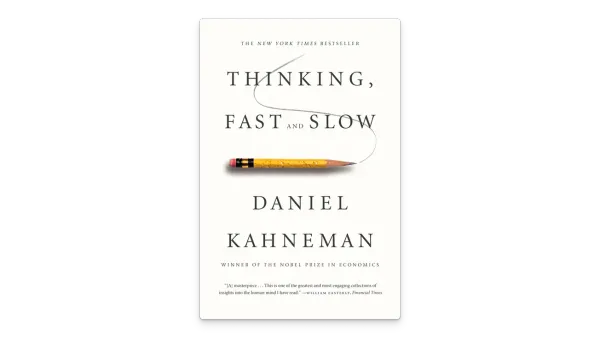Workplace Learning
What’s in it for me? An introduction to learning cultures.
Polling suggests that just one third of all employees are engaged at work. The rest? Unmotivated. Bored. Barely there. Struggling to find any meaning in the activity that takes up most of their day.
It’s a bleak picture, and for many of us it’s confirmed by first-hand experience of dysfunctional, poorly-run organizations, toxic workplace norms, and self-serving leaders. Learning, when it does occur, is often little more than an afterthought, dished up on a limited, need-to-know basis.
But, as the American poet TS Eliot once wrote, there is, at best, “only a limited value in the knowledge derived from experience.” He wrote those lines during the Second World War, when hope was in short supply. What he meant was that things can always get better, no matter how gloomy they look. If experience can “falsify,” it’s because it stops us remembering that.
this summary, like the book on which it’s based, is convinced that workplaces can improve, whatever experience teaches us. As Nigel Paine sees it, they have to. We live in a world of dramatic social, political, and technological change. To navigate this environment, organizations will have to create workforces that want to learn and teams that are as agile as they are adaptable. And to do that, they will have to create a culture of learning in which people share ideas, knowledge, and solutions.
In these summary, you’ll learn
- What the brain can teach us about collaboration;
- Why organizations should cherish the bringers of bad news; and
- How companies as different as WD-40 and Microsoft foster learning.
Learning cultures build connections between individuals.
In 1995, Nigel Paine, the author, talked to Microsoft’s co-founder and CEO, Bill Gates, about how organizations harness the intelligence of employees.
Microsoft, Gates said, employs lots of very smart people. Thing is, though, smart people often think their view is the only one worth considering. It’s got to be, after all, since it’s the correct view! Put differently, they tend to view their smartness in a self-contained way. Everything important is in a kind of silo – their brains. That’s where they look for answers and solutions to problems.
But lots of smart people sitting in an office working on their own problems doesn’t make a company. And that’s where leaders come in. Gates’ role at Microsoft, he said, was to make sure that one plus one plus one added up to more than three. That the whole was greater than the sum of its parts. That knowledge wasn’t siloed away in individual heads, but shared around.
Years later, when Paine started working on his book, that thought bubbled back up to the surface of his mind. Gates, he realized, had distilled his view of workplace learning into a single idea. That idea is also at the heart of this summary. It says that workplace learning is collective.
We’ll be exploring that idea at scale – mostly, we’ll be talking about large multinational organizations. But we can start with an analogy that illuminates collective learning at a smaller level: the brain.
There are, roughly, 100 billion neurons, or brain cells, inside your head. Each neuron can make 1,000 unique connections. Those connections are the seat of knowledge and intelligence. It’s the density of connections that drives cognition. Viewed at this microscopic level, “learning” is what happens when you build new connections. Billions of neurons on their own don’t cut it – it’s the synapses between them that make the difference.
Organizations, Paine thinks, work the same way. Individuals, like neurons, are wonderfully complex cells containing all kinds of potential. But organizational intelligence and knowledge emerges in the spaces between them. The know-how and smarts of each cell has to be activated, and that happens when individuals are connected to one another. When they share knowledge and communicate.
An organization which ensures that individuals are better connected and more willing to share, Paine concludes, is an organization with a functioning learning culture. For him, that’s what Gates was describing back in 1995, even if Microsoft's CEO didn’t use that term. And fostering that kind of culture is still the best way to build effective organizations today. As the Canadian scientist Donald Hebb famously put it, “cells that wire together, fire together.”
You can’t fix problems without honest communication.
Let’s pause for a second and look at things from a different angle. How does an organization that fails to foster a communicative, sharing-based learning culture work? The short answer: it doesn’t.
Let’s see why. We’ll take a hypothetical company, but you might recognize the kinds of problems that come up. Maybe you’ve even worked for a company that was run like this.
Let’s say this company has product – we’ll just call it Product X – that’s not doing too well. Actually, it’s worse than that. It’s tanking. It’s a loss-accumulating dud. In short, Product X needs to be axed. Lots of people know that, but nothing happens. Years go by and the company carries on pumping out Product Xes until, eventually, there’s a multi-million dollar hole in its spreadsheet. The question, here, is simple – why can’t anyone recognize this unpleasant truth and correct this mistake?
Oftentimes, things play out this way.
The folks who know the problem best – plant managers, say, or the people who deal directly with customers – also know that raising the alarm isn’t going to win them many friends. No one wants to write the memo that says that fixing Product X is going to cost more than any profit it might feasibly generate. But even if they do write that memo, it won’t go straight to the top of the organization.
First, it has to pass through the hands of middle management – the people who did the production and marketing studies which said Product X was a great idea. They’re reluctant to be the bearers of bad news, too, but they’re also dealing with sunken costs. Recognizing a problem now means admitting that their original analysis was wrong. So what do they do? They send a watered-down message up to their superiors. Sure, there’s a hitch, they say, but it’s nothing they can’t fix.
By the time decision-makers hear about it, the problem just doesn’t sound that serious. That’s handy because they don’t want to admit that they signed off on a bad idea either. And so the message that comes back down the organization is as bewildering as it is demoralizing: carry on doing what you’re doing. From the bottom up, it looks like the people in charge are clueless.
But it’s not like you can say that either! Organizations like our hypothetical company and its real-world counterparts develop norms which say that you can’t confront company policies and objectives – or the top managers who back them. Communicating awkward truths upwards violates those norms, which leads to employees hiding mistakes and soft-pedaling problems. Once that’s happened, things get really bad. Now, you have to violate norms and admit to camouflaging problems. A few selfless whistleblowers might have the stomach for that, but most employees just aren’t going to risk their reputations – or paychecks – to save a dysfunctional company.
Micromanagers stifle initiative and sap motivation.
Every two years, Gallup cavasses around a million American workers to create a representative survey of people’s feelings about work. And every two years Gallup finds that half the workforce is disengaged. One in two people, in other words, is just there. Apart from the paycheck, they see their work as meaningless. A further 15 percent of workers actively resent their employer. That leaves just 35 percent who describe their work as engaging and rewarding.
If these numbers were smaller, it would be possible to chalk that dissatisfaction up to people having bad attitudes, or being lazy, or some other individual failing. But when two thirds of all employees feel the same way? Well, that’s an organizational problem.
We can take a look at a bank the author worked with to get a sense of that problem.
This – nameless – bank installed tracking software to monitor its call center staff. This wasn’t even good software, though. When workers were checking information, or consulting databases, it assumed they were idle. Supervisors knew the software was faulty, but they had their orders, so they reprimanded people anyway. Did productivity improve? No, of course not! Staff gamed the system. They found ways to trick the software. Lots of time was wasted and trust evaporated. Now imagine if Gallup had come along and asked them how they felt about their jobs….
This is a variant of the problem we encountered when we looked at the fictional maker of Product Xes. Call it the command-and-control model.
This model assumes there’s a leadership, which commands, and a majority that’s controlled, with little scope for autonomous action. For a long time, this model worked pretty well. For organizations, anyway – it was never great for workers. That’s because it’s a good model for, say, making cars in a stable market with few foreign competitors. But that world doesn’t exist anymore. Digitalization, globalization, individualization – there are lots of big words to describe recent social changes, but they all boil down to the same thing. The world is faster, more complex, and less stable. And in this turbulent world, the skill that really matters is the ability to rethink and unlearn and learn again.
But if you instill a culture that involves little more than telling people what to do and when to do it, you’re inhibiting that skill. Yes-men and yes-women will do the bare minimum – just enough, usually, to keep their jobs. The upshot: no one trusts them to do the right thing. That’s when management doubles down on command-and-control policies like that morale-sapping surveillance software. Or it enforces conformist norms which stifle criticism – and people’s ability to address and fix problems.
So what’s the takeaway here? Well, simply put, everything’s connected. People with little autonomy don’t find meaning in their work, so they do the bare minimum and keep their heads down. That’s bad news if you’re operating in a fast-moving, ever-changing environment: as we saw, top-down, command-and-control organizations are really, really bad at problem solving.
Successful companies don’t punish mistakes – they learn from them.
Okay, now that we’ve learned how not to run an organization, let’s shift gears. What should you be doing to keep your company agile, motivated, and capable of rapid problem solving? Let’s take a look at how one of the world’s most successful companies does it.
WD-40 is a remarkable organization. For decades, it made just one product – the blue-and-yellow cans of industrial lubricant found in households, garages, and workshops the world over. More recently, it acquired some compatible brands like 3-in-One, a multipurpose oil. Fundamentally, though, not that much has changed. WD-40 found a winning strategy and stuck to it. The results speak for themselves. Since 1997, the year current CEO Garry Ridge took over, its market capitalization increased from $250 million to $4.5 billion. So what’s WD-40 secret?
The short answer can be found in a 2016 article in the Harvard Business Review, which described the organization as being driven by a “learning-obsessed company culture.” Let’s break that down.
One of Ridge’s favorite ideas is the learning moment. A learning moment can be positive or negative. Small or large. Really, it’s anything that went better or worse than expected, whether drastically or slightly. Point is, when that happens, you share it. You tell people what you were trying to do and what you expected to happen and what actually happened. And, of course, what you learned. That’s the most common question you’ll hear in WD-40 meetings: “What did you learn today?”
Learning moments are part of a broader company culture around honesty. All staff are expected to admit mistakes, not hide them. The company, meanwhile, pledges – this is an explicit policy – not to punish them for those mistakes. Being open about what you got wrong, Ridge believes, helps both you and your colleagues learn. What is punished, by contrast, are cover-ups, blame games, and consistently failing, or refusing, to learn from mistakes. Those behaviors do result in dismissal.
The other key concepts in WD-40’s culture are openness and transparency. Every WD-40 employee, for example, has access to what’s known as the Blue Vault. That’s a huge repository of technical information about every aspect of the company’s operations, freely accessible to all at any time. And they’re expected to use it, too, at their own initiative. Employees sign a pledge when they’re hired in which they commit to certain actions. As the pledge itself puts it, “If I need to know, I’m responsible for finding out.” Individuals, in other words, are encouraged to act and learn autonomously.
It’s also made clear that what they learn isn’t to be siloed away in their heads. If they think someone else might need to know something, they have a duty to share that knowledge with them – again, at their own initiative. As Ridge sees it, this is how horizontal, peer-to-peer learning cultures are built.
Transparency is the final piece of the puzzle. WD-40 doesn’t do back-room deals, or negotiate salaries behind closed doors. Every bit of financial information, from pay to investment and revenue data, is published for staff, meaning there are no obvious injustices or unfair discrepancies.
Add all that up and you get an efficient learning culture and a happy team. Like Gallup, WD-40 conducts a survey about workplace attitudes every two years. Theirs makes for happier reading, though. As of 2020, 98 percent of employees said they feel engaged and motivated at work!
Successful leaders don’t focus on answers – they ask the right questions.
In 2014, Microsoft appointed a new CEO – Satya Nadella. He was a surprise choice. There was no question that the former head of the company’s cloud services division was competent. But he’d flown under the radar. For many, he didn’t look like a leader. He wasn’t bold and brash; he listened more than he talked. That, though, was exactly what the organization needed.
Thing was, Microsoft was falling behind. In its heyday, it had been the largest company in the world by market capitalization. That honor now belonged to its competitor: Apple.
Steve Ballmer, Nadella’s predecessor, ran Microsoft with a steady hand. Revenue grew, but more slowly than in the past. More worryingly, “old” technologies accounted for the largest part of that revenue. The world was changing, too – fast. Consumers were gravitating away from desktop PCs and embracing smartphones. When Ballmer saw an iPhone back in 2007, he predicted that it would flop – no one wanted a phone without a proper keyboard, he said. It was a symbolic moment. Microsoft, under Ballmer, had been blindsided by technological innovation.
Apple, by contrast, was roaring into the future. By 2017, two thirds of its revenue came from iPhones – the carriers of the social media revolution. While Microsoft stuck to old models and sold its software, Apple gave it away for free. That meant more people updated their operating systems, which made it easier and cheaper for Apple to provide support. Microsoft, meanwhile, had the unenviable job of supporting multiple iterations of its operating system, some a decade old.
For Nadella, these were symptoms of a larger problem. As Bill Gates told the author, Microsoft employs a lot of very smart people, and smart people are often convinced that they know better than others. But you can’t steamroll people into buying something because you believe it’s a smart design and a great product. You have to make things people want. Things that help them and make life easier. And to do that, you have to see where they’re coming from. To understand what excites them and what frustrates them. In short, you have to listen. That, Nadella thought, was Microsoft’s original mission – a mission the company had forgotten.
At the beginning of his tenure, he asked all senior managers to read a book called Nonviolent Communication by American psychologist Marshall Rosenberg. In that book, Rosenberg lays out an empathetic communication model in which our own perspective is complemented by the perspective of others. For example, a statement beginning with “I feel” or “I need” is automatically paired with an inquiry about what you feel and what you need. And rather than handing out orders, leaders within Microsoft were now encouraged to ask questions, like “Would you be willing to…?”
These cultural changes at the top helped rekindle the spirit of curiosity that had once defined Microsoft. Slowly but surely under Nadella, it became less of a know-it-all company and more of a learning company. The result was an organizational culture that was open to meaning, reference, and knowledge from outside the company – from the world of its customers. The result? Microsoft is back. Under Nadella, it’s added $250 billion of value and tripled its income!
Final summary
The most important thing to remember/take away from all this is:
Learning is about adaptation and problem-solving. It’s about identifying issues and coming up with fixes. What it’s not about – not in the world of work, anyway – is solitary geniuses plowing lonely furrows. Within organizations, solutions are the fruit of collaboration. It’s what happens between people when they come together and share insights and know-how. Leaders can’t make all of that happen on their own. What they can do, though, is foster cultures of curiosity and build frameworks in which individuals and teams can learn from one another.




